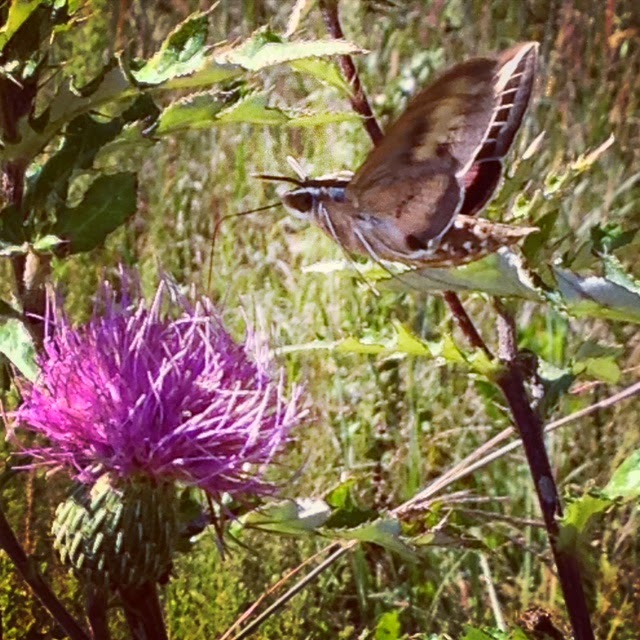 |
| The beautiful Hypocala andremona |
 |
| Sphinx moth |
I was delighted to find a hypocala moth in south Texas (November 2014). S/he had obligingly posed on an orange bank of flowers, accentuating the bright underwing coloration. They can be a defoliating pest on persimmon leaves as caterpillars, but I can't begrudge them that. It is rare for a tree to die from periodic defoliation. Hypocala moths themselves are heavily parasitized by beneficial insects, especially the trichogramma wasps. To me, they don't seem like a pest that requires active intervention. Supposedly they are most frequently seen in Texas, and they can be found from Central America up through the southern states.
Distinguishing the very similar underwing moths (catocala) from the hypocala moths is not easy. Both are medium-large moths with drab upper wings and colorful, patterned underwings. I read that catocala means "beautiful below" in latin on bugguide.net, so hypocala must mean "beautiful underneath". Basically the same thing. They are both in the Erebidae family, but the precise taxonomic split varies by source. I doubt I could have teased apart this taxonomic distinction without help from the "Mothing and Moth Watching" Facebook group. Following this group is addictive. People post pictures from all over the world-- who knew there were so many gorgeous moths in China and Brazil?
If I've piqued your interest, you can read more about moths on this blog here and here, or you can become a member of "Mothing and Moth Watching" on Facebook.
 |
| Possibly a day-flying large lace border moth (Scopula limboundata) |
No comments:
Post a Comment